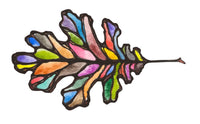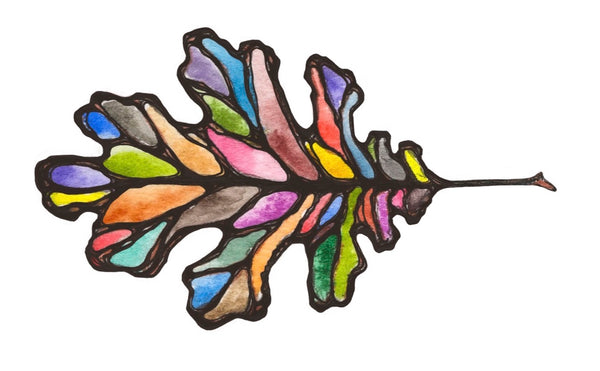
New Paintable Project: Magic Paint Tubes
It seems to be a strange and sad fact of life that the more we learn and the more experience we have, the more we lose our imagination.
Children sit down with a spread of crayons and scrap paper and can happily amuse themselves for hours churning out image after image. It doesn't have to be "good" or make sense or be relevant to anything. The emphasis is on the process, the creativity is an element as important as the markers, and the joy is evident in the finished image.
Meanwhile, we "grown-ups" sit down to a blank page and can rather immediately be paralyzed by fear or creative constipation. (Beautiful mental image, I know.) And the inevitable questions: What if it's not good enough? What if it's just a waste of time? What should I even paint? What's even the frigging point? We can go from inspiration to existential crisis in under one minute, easy.
The analytical parts of our brain want to be involved in every decision. But it is important for many artistic decisions to come from other areas - ones that are less connected to ego, fear, and analysis.
Bottom line is that, while there are plenty of rules in art worth learning and paying attention to, almost none of these have to do with style or subject. There is no federal detail out to chastise those who color outside the lines. You won't be punished for painting your cat blue.

So, I have begun a new Paintable Project Series: The Imagination Suite. This will be a series specifically geared towards getting in touch with and cultivating a more active relationship with your imagination.
These Paintable Projects will be different from the butterflies in that they are more like half of a project. I set up a base idea, complete with step-by-step instructions, materials list, and notes to walk you through part one of a project. The second part is completely up to you and can be taken in any direction you like.
Paradoxically, we tend to be more free when we start with something rather than nothing. It is too easy to become overwhelmed with you can paint anything. So, in these Projects, I provide a starting point, walk you through developing it, and then you take it the rest of the way.
Project 1 of the Imagination Suite of Printable Projects is called: Magic Paint Tubes. It is all about using your imagination to redefine how you think about the colors in your palette and what all they can be. In essence, when you invoke your imagination you get to play with magic. The Artist conjures images. Their special power being their own unique blend of vision, style, and skill. Your brush is something akin to a magic wand, and with it you turn the colors in your palette into anything you want.
In this post, I'll share with you the first way I decided to complete the Magic Paint Tubes Project.

In the Magic Paint Tubes Paintable Project, you are provided with an assortment of drawings of paint tubes. Instructions will lead you through printing them onto watercolor paper. There is an information packet that will guide you step-by-step through painting in the value tones of your tubes. The project leaves you with sheets of nicely painted tubes - and YOU get to take it the rest of the way from there!
I decided to call the painting idea I started with: Pixie Dust Paint. I wanted to depict the colors in my palette as being enchanted and celebrate the pure potential they represent before they are brushed onto paper.
Creating Your 'Pixie Dust Paint' Painting
To begin this project you can either sketch and paint a set of paint tubes from your own collection, or you can begin with your choice of completed Magic Paint Tubes Paintable Project sheet.
First: Lay Out Your Magic Paint Tubes & Select Your Colors

I chose to work with the arrangement of five paint tubes from the Magic Paint Tubes Paintable Project. I painted them in according to the instructions and using Slate watercolor paint.
I then chose five colors from my palette that I would use to create the Pixie Dust Paint coming out of each tube - one color per tube. You will get more dramatic effects if you choose colors with a wide value range because they can appear in a greater variety of concentrations. You can recognize these colors easily - they appear black or very dark when dry in the pan. All watercolors can be diluted to complete transparency with water, but not all colors will appear nearly black at their most concentrated (a color's state in the pan is at its highest possible concentration).
The colors I chose to work with:
Mayan Blue
Violet Hematite
A natural green that is still in testing
Vivianite
A natural red that is still in testing
Second: Create Color Clouds
For the next step, you'll create wispy clouds of color coming out of each paint tube. To achieve a cloud-like effect, make a controlled wash with water only in the area you wish to paint. Go one color and tube at a time - otherwise, if you try to do all the washes at once, you will be fighting the water drying on you through the entire process.
After you have applied water to the paper in the area above your first paint tube, apply your first color and spread it though the wet area. Deepen the color towards the center of the cloud and blend it out, allowing it to lighten as you move to the edges of your cloud. Once you are satisfied with your color distribution, move on to the next tube, color, and cloud. After all of your color clouds have finished drying, move on to the third and final step.

Third: Add Tiny Stars And Transform Into Pixie Dust Paint
The third step is both fun and a little time consuming. Using a fine watercolor brush, go back through each color cloud adding a multitude of tiny stars. It is important to be delicate and patient with your brush. At first, creating the tiny stars may be frustrating, but you will soon be quite practiced and find that you can move methodically through the detailed shape.
It will allow greater variety if you allow your color to vary. After you dip your brush, you will have a higher concentration of color on your brush and therefore be painting darker stars. Pair darker stars with the darker areas of the color cloud and paint lighter stars towards the edges. This will create the illusion of depth.
After you have added swarms of tiny stars to each of your color clouds, voilà! You have a completed piece of artwork!

This is just one of many, many different ways to complete this painting. I would love to see your finished versions! Feel free to share with the tag #GBPIY
Hope you enjoyed this whimsical little project. As always, wishing you Happy Painting!
Jess

